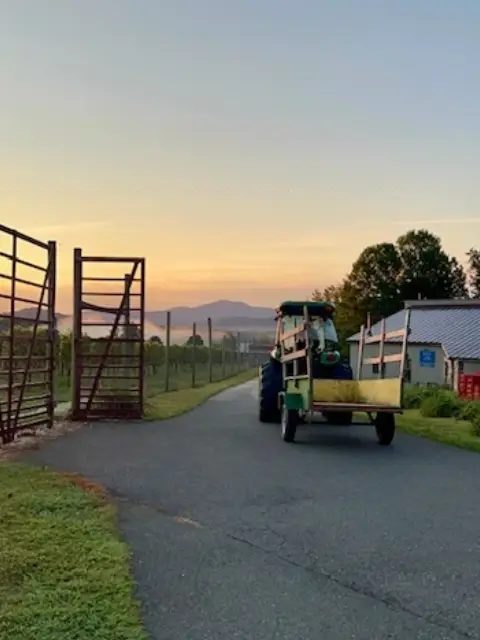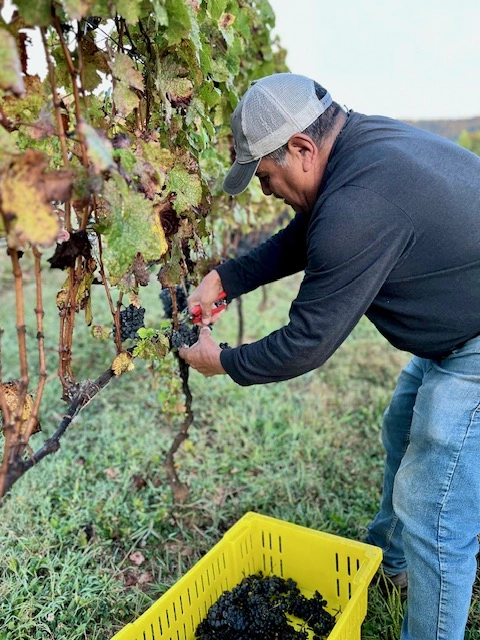Virginia’s wine industry has flourished over the past several decades, establishing the Commonwealth as one of the most promising wine regions on the East Coast. From the rolling hills of Loudoun County to the scenic vineyards of Nelson County, Virginia’s diverse terroir produces exceptional wines that rival those from more established regions. One of the most critical periods in the winemaking calendar is harvest season, when months of careful vineyard management culminate in the careful collection of perfectly ripened grapes. Here are the most frequently asked questions about grape harvesting in Virginia wine country.
When does grape harvest season occur in Virginia?
Virginia’s grape harvest typically begins in late August and extends through mid to late October, depending on the variety and specific vineyard location. The timing varies significantly based on several factors, including the grape variety, elevation, and weather patterns throughout the growing season. Early-ripening varieties like Chardonnay and Pinot Noir are usually harvested first, while later-ripening varieties such as Cabernet Sauvignon and Petit Verdot may not be ready until October.
The state’s varied topography creates different microclimates, meaning vineyards at higher elevations or in cooler areas may harvest weeks later than those in warmer, lower-lying regions. Winemakers closely monitor sugar levels, acidity, and flavor development to determine the optimal harvest window for each block of grapes.
What factors determine when grapes are ready for harvest?
Determining harvest readiness requires careful evaluation of multiple factors. Sugar content, measured in Brix, is a primary indicator, with most wine grapes harvested between 19-26 Brix depending on the desired wine style. However, sugar levels alone don’t tell the complete story.
Winemakers also assess acidity levels, which naturally decrease as grapes ripen. Maintaining proper acidity is crucial for wine balance and aging potential. pH levels are equally important, as they affect wine color, stability, and microbial activity during fermentation.
Perhaps most critically, winemakers evaluate flavor and phenolic maturity through regular tastings. Seeds should be brown rather than green, indicating physiological ripeness, while tannins in red grape skins should be balanced rather than harsh or astringent. Weather forecasts also play a significant role, as impending rain or extreme temperature changes can accelerate harvest decisions. Essentially, winemakers, such as Damien Blanchon of Afton Mountain Vineyards, incorporate science with nuanced understanding of uncontrollable factors to make the decision.
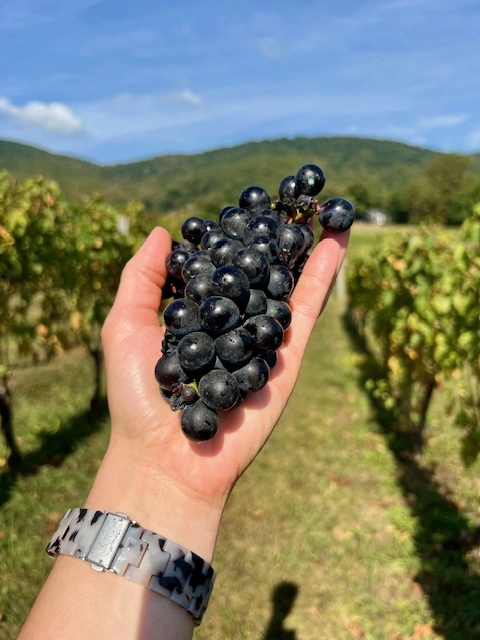
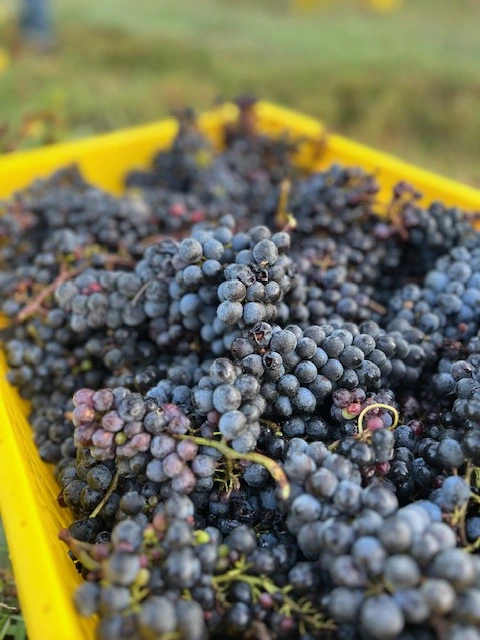
How do Virginia wineries typically harvest their grapes?
Virginia wineries employ both mechanical and hand harvesting methods, with the choice depending on vineyard size, terrain, wine quality goals, and budget considerations. While some large-scale vineyards use mechanical harvesting, many quality-focused wineries along the Nelson 151 Craft Beverage Trail insist on hand harvesting. This labor-intensive process allows for selective picking, ensuring only the best grapes make it into production while minimizing damage to both the fruit and vines.
Hand harvesting involves teams of workers carefully cutting grape clusters with specialized shears, immediately sorting out damaged or unripe fruit. This method is particularly important for premium wines, as it allows for gentle handling and immediate quality control. Many Virginia wineries schedule hand harvesting during cooler morning hours to preserve fruit integrity and prevent premature fermentation.
Mechanical harvesting, while less common among boutique wineries, can be effective for certain varieties and vineyard configurations. Modern harvesting machines use gentle shaking mechanisms to remove grapes from vines, though this method requires careful calibration to avoid damaging fruit or vines.
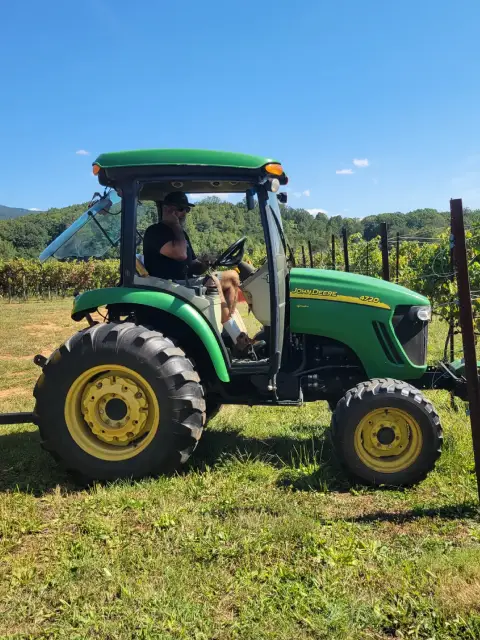
What challenges do Virginia winemakers face during harvest?
Virginia’s humid climate presents unique challenges during harvest season. High humidity levels can promote fungal diseases like botrytis, which can either enhance certain wine styles or completely destroy a crop if unwanted. Winemakers must carefully monitor weather conditions and make rapid harvest decisions when disease pressure increases.
Sudden weather changes are another significant challenge. Late summer thunderstorms can cause grape splitting or dilute flavors, while unexpected temperature drops can halt ripening. Hurricane season occasionally affects Virginia’s coastal and eastern regions, potentially forcing emergency harvests.
Labor availability has become increasingly challenging, as harvest requires large numbers of workers during a compressed timeframe. Many wineries rely on volunteers, wine club members, or temporary workers to supplement their regular staff during peak harvest periods.
Bird pressure is another common issue, particularly for vineyards near wooded areas. Many wineries invest in netting systems or employ other bird deterrent methods to protect ripening fruit.
How has harvest technology evolved in Virginia?
Virginia wineries have embraced various technological advances to improve harvest efficiency and quality. Optical sorting machines, while expensive, allow wineries to remove damaged or unripe berries with unprecedented precision. These systems use cameras and sensors to identify and reject substandard fruit automatically.
Temperature-controlled transportation has become standard practice, with many wineries using refrigerated trucks or scheduling nighttime harvests to maintain fruit quality from vineyard to winery. Some operations employ portable cooling units that immediately chill grapes upon harvest.
GPS technology and precision viticulture tools help winemakers map vineyard variability and harvest different zones at optimal times. Handheld devices can instantly measure sugar content and other parameters, enabling real-time harvest decisions.
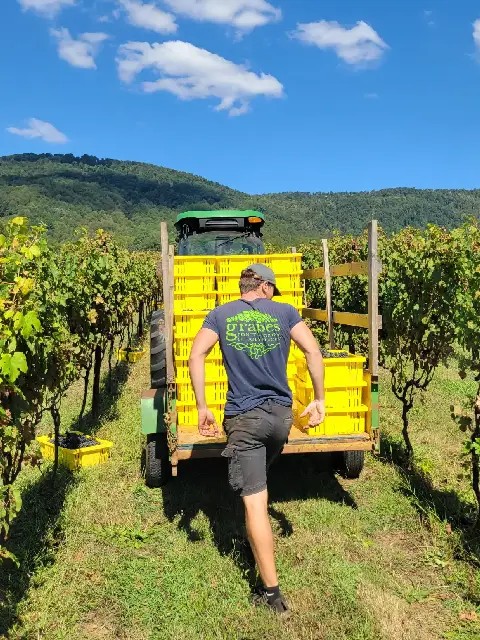
What makes Virginia’s harvest season special for visitors?
Virginia’s harvest season offers wine enthusiasts unique opportunities to experience winemaking firsthand. Many wineries welcome volunteers for harvest activities, providing education about grape selection and winemaking processes. These experiences often include meals, tastings, and behind-the-scenes access to production facilities.
The scenic beauty of Virginia wine country during autumn creates spectacular backdrops for harvest festivals and special events. Cooler temperatures make vineyard visits more comfortable, while fall foliage adds visual appeal to the rolling vineyard landscapes.
Harvest season also represents the culmination of a year’s work, creating an atmosphere of excitement and celebration throughout Virginia wine country. Visitors can witness the transformation from grape to wine while enjoying the unique hospitality that defines Virginia’s wine culture.
Virginia’s grape harvest represents both agricultural tradition and modern innovation, combining time-tested techniques with cutting-edge technology to produce wines that reflect the Commonwealth’s distinctive terroir and growing reputation as a premier wine destination.
